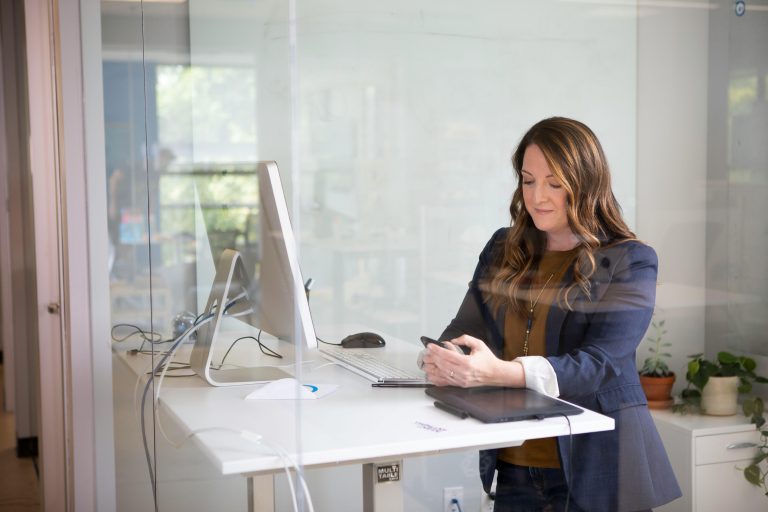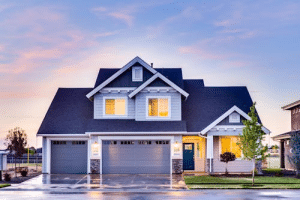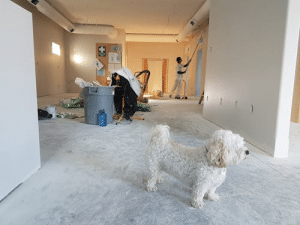When standing desks first appeared in offices, they felt a bit like a gadget. You’d spot one in a corner of a tech startup, next to a beanbag and a whiteboard wall, or see a lone adjustable platform in a corporate space where everything else was still fixed and traditional. A few early adopters tried them out of curiosity or because they’d heard that “sitting is the new smoking,” but most people saw them as a quirky extra rather than serious furniture.
Those first versions were not always convincing. Many were clunky, manual crank models that wobbled if you typed too fast or dragged your laptop across the surface. Some users loved the relief they felt in their back and shoulders when they could finally stand for part of the day. Others gave up because adjusting the height felt like a mini workout or the desk never quite stayed at the right level. Over time, though, two things became obvious: movement genuinely helped people feel better, and the weak point was the hardware, not the idea. That’s when standing desks started to move from “trendy office toy” into the category of serious ergonomic choice.
When Work Came Home: How the Standing Desk Left the Office
Many people came to the understanding that upgrading their chairs was not enough. A correct, height-adjustable working area was gradually perceived as less of a luxury and more of a necessary instrument. That’s when the modern electric standing desk moved from the corporate world into living rooms, spare bedrooms, and even spaces near the pantry or open shelving. Quiet motors, memory presets, and compact frames meant you could tuck a desk into a corner without turning the whole room into a traditional office.
As home layouts evolved, the desk began to sit alongside good storage, smart shelving, and well-planned kitchen or pantry zones as another “organizing tool.” It wasn’t just about standing; it was about giving work a defined, ergonomic place so the rest of the home could stay calm, functional, and clutter-free.
From Wellness Extra to Productivity Essential
At first, standing desks were often sold as a “healthy add-on” – something you bought if you were worried about your back or wanted to close your rings on a fitness tracker. As time passed, individuals recognized another advantage differently: the days seemed to be more vivid when they combined sitting and standing. Changing a few times your position keeps the blood flowing, makes it easier to stay awake, and so it reduces the heaviness of those mid-afternoon slumps in which every email seems to be more difficult than it should. A useful desk is a silent helper in this movement, rather than giving you the option of sitting all day or standing until your feet hurt.
The ergonomic gains are subtle but steady. Standing a little taller, keeping screens at eye level, and avoiding the “curled over the laptop” posture takes pressure off the neck, shoulders, and lower back. That is the difference between just getting through the day and finishing with enough energy left for the rest of your life at home. Many people also find that the desk becomes a kind of rhythm tool: higher for deep-focus work, a quick raise before a call, lower again when it is time to sit and write. Height changes mark the flow of the day, turning the desk into a small but powerful habit anchor rather than just another flat surface.
Fitting a Standing Desk Into Real Homes and Small Spaces
In the majority of households, it is not being asked whether a standing desk would be beneficial, but rather where it would be able to fit. In the absence of any extra space, the most suitable alternative is to place it in a corner – next to the pantry, close to the open shelving, or along a kitchen or dining wall – thus ensuring that there is still room for moving. Minimal designs and neutral colors make it disappear visually.
Even in tiny apartments or shared rooms, a few layout tricks can make a big difference, for example:
- Choosing a narrower desktop that matches the wall length.
- Using wall shelves or vertical racks instead of deep side cabinets.
- Pairing the desk with a stool or chair that tucks fully underneath.
- Letting the area double as a prep, craft, or sorting surface outside work hours.
When the space around the desk is planned this way, it supports your day instead of fighting with it, and the rest of the home stays calm and usable.
The Next Step: Smarter Standing Desks for Organized, Healthy Homes
Today’s standing desks are designed to slip neatly into a thoughtful home setup rather than dominate it. Memory presets let each person save their ideal sitting and standing heights, so changing position is literally a button press, and some models can nudge you to move or sync with your other home-office gear. Choosing a sturdy frame and quality top once is far better than constantly replacing wobbly tables or improvised risers that never feel quite right. Over time, that reliability pays off in comfort and focus, which is why a standing desk now sits beside good storage and layout as a quite essential, not a passing trend.













